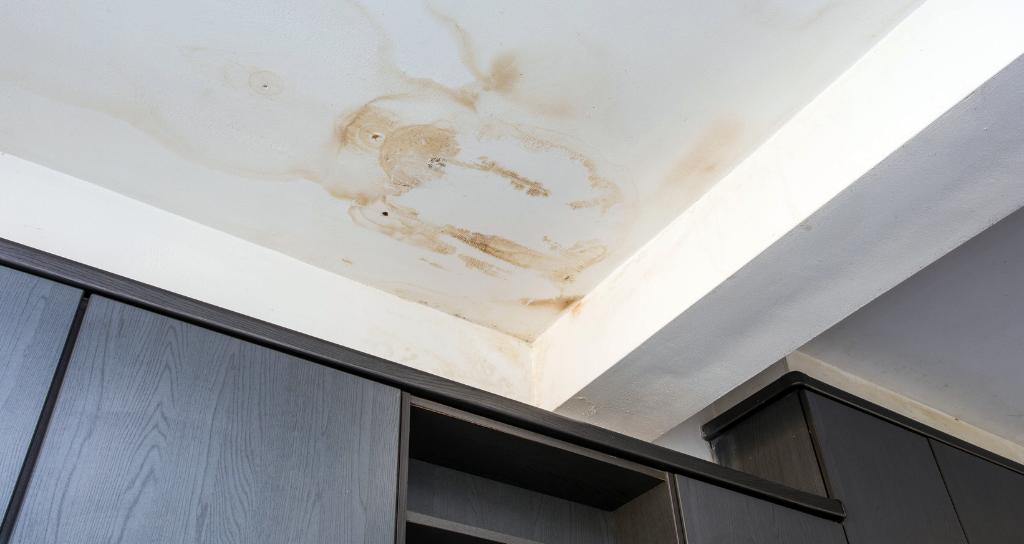A water spot on your ceiling after heavy rain can be a cause for concern, and it’s not something you should ignore. While it may seem like a minor issue, it can lead to more significant problems if left unaddressed. In this article, we will explore the common causes of water spots on ceilings after heavy rain and provide practical solutions to tackle this issue effectively.

Understanding Water Spots on Ceiling
Water spots on the ceiling are often telltale signs of a leak or water infiltration. These spots can vary in size, from small discolored patches to larger, more noticeable marks. When they appear after heavy rain, it’s a clear indication that water from the rain has made its way into your home. Here are the common reasons behind these water spots:
- Roof Leaks Heavy rain can expose weaknesses in your roof, leading to leaks. This is particularly true if your roof is old or hasn’t been properly maintained. Water can find its way through damaged shingles, gaps in the flashing, or compromised sealant around roof penetrations like chimneys and vents.
- Damaged Gutters and Downspouts Faulty gutters and downspouts can exacerbate the problem. If they are clogged, broken, or improperly installed, rainwater may overflow or spill close to your home’s foundation. This excess water can seep into the walls and find its way to your ceiling.
- Attic Condensation Sometimes, water spots on the ceiling aren’t related to external leaks. Poor attic ventilation and insulation can lead to condensation issues. When warm, moist air from inside your home rises into a cold attic, it can condense and cause water spots on the ceiling.
Dealing with Water Spots on Ceiling
Now that we understand the potential causes of water spots on the ceiling, it’s time to explore how to address and prevent this issue.
- Identify the Source of the Leak The first step in addressing water spots on the ceiling is to identify the source of the leak. This may involve inspecting your attic or crawl space, checking the roof, and examining your gutters and downspouts. Look for signs of water damage, such as wet insulation, stained rafters, or mold growth. Once you’ve pinpointed the source, you can take appropriate action to fix it.
- Repair Roof Leaks If your roof is the source of the problem, it’s essential to repair it promptly. Depending on the severity of the damage, you may need to replace missing or damaged shingles, repair flashing, or reseal vulnerable areas. Consider hiring a professional roofer to ensure the job is done correctly.
- Maintain Gutters and Downspouts Regular maintenance of your gutters and downspouts is crucial. Clean them at least twice a year to remove debris and ensure proper water flow. Inspect for any damage and repair or replace damaged sections. Ensure that downspouts direct water away from your home’s foundation.
- Improve Attic Ventilation and Insulation To prevent attic condensation, ensure your attic is properly ventilated and insulated. This will help regulate temperature and humidity, reducing the likelihood of moisture buildup. Installing ridge and soffit vents and adding more insulation can make a significant difference.
Read too: What To Do With Ceiling After Removing Popcorn
Conclusion
A water spot on the ceiling after heavy rain is not something to be taken lightly. It’s a clear sign of water infiltration and potential damage to your home. By identifying the source of the leak and taking appropriate steps to address it, you can prevent further issues and maintain the integrity of your home. Regular maintenance of your roof, gutters, and attic is key to preventing water spots and the problems they represent. Don’t wait; tackle this issue promptly to keep your home in top condition.